#locust hatching
Text
Pharaoh Cicada | Cicadas | Locusts #shorts #cicada #locust #cutecritters #bytesizeambs #truebug
I've been so excited about posting this YouTube short. The Pharaoh Cicadas (17 Year Locusts) are out! It is so amazing to watch them molt and just be.
NOTE: Video quality is better when watched via YouTube. Info on Pharaoh Cicadas in the description of this YouTube short.
EDIT: Since YouTube has decided to keep deleting the description on this one video, I'm posting it below.
We were fortunate enough to see several Pharaoh Cicadas (17 Year Locusts) molting last week. It was amazing to see and I was able to get one on video for this short.
Pharaoh Cicada (Magicicada septendecim)
The majority of the life of Magicicada septendecim is spent in an underground or subterranean habitat. The area in which a periodical cicada brood is located must contain a large population of deciduous trees, on whose roots the cicadas feed during the underground nymph stages. The trees are also necesary for the molt into adulthood, choruses, and egg-laying (Boyer 1996). (iNaturalist)
Habitat Regions: temperate ; terrestrial
Terrestrial Biomes: forest
Other Habitat Features: suburban
Cicadas can provide several environmental benefits, including:
Food source for predators: Cicadas are a valuable food source for birds, reptiles, insects, and mammals
Soil improvement: Cicada tunnels aerate the soil, and their decomposition adds nutrients to the soil
Tree pruning: Cicadas prune mature trees, which can lead to increased flowering and fruit production in the following year
Water filtration: Cicadas improve water filtration into the ground
#shorts #cicadas #locusts #pharaohcicada #bytesizeambs #bytesizeambsshorts
#bytesizeambs#youtube#youtube shorts#shorts#bytesizeambs shorts#amberlou#nature#hiking adventures#cute critters#loulouambrosia#cicada#cicadas#pharaoh cicada#17 year locust#locusts#cicadas molting#trending on YouTube#locust hatching
5 notes
·
View notes
Text
I'm going to sound rude for a second but I'm already sick of the 'don't spray the cicadas with pesticide/leave them alone/yes this may be inconvenient but it happens once every 17 years etc' being met with 'not me! Fuck those things! If one even touches me I'm gutting it/spraying it with pesticides etc! I'll get a panic attack!'
Like if you'll legitimately have a panic attack from a cicada during the brood hatch, stay inside. I'm sorry and it really sucks that you have phobia levels for this creature, but you having a phobia does not mean you should wish harm on an animal that is just....... Doing... It's life.... Cycle?
Sorry. Make movements and decisions that keep you safe and protected that don't involve invoking actively fucking with a beautiful and awesome ecological event. It's not the cicadas fault.
Like legitimately I'm sorry you have this level of fear for cicadas. That sucks and I feel for you. I used to have sometbing similar with locusts and it's not a good feeling. But, uh, the bug isn't being malicious to you personally, I promise, and just wishing harm on an innocent animal is.... Man that sucks
2K notes
·
View notes
Text

this is as far as i got into a diagram of siphos, the dominant life form of Siren, my big big worldbuilding project. it's fuck ugly and i am not lining this. I really liked the idea of alternating generations and a stupid complex life cycle. Ultimately there are no 'plants' on Siren as we know them. Instead we have the 'sessile' generation of the creatures which, in a different 'active' generation, are among the fastest and most active apex predators in the vast freshwater seas of Siren. It took the first human settlers on Siren years to understand that what they were assuming were completely different animals were in fact all the same animal - and, ultimately, it brings into question the definition of 'species' as it stands.
Tides are regular but slow; a yearly occurrence (when not a neap or spring supertide). When there is no or very little water movement (during a low tide phase), the fresh water forms strongly stratified layers, including an anoxic dead zone near the bottom. the increased water flow of a rising or falling tide increases mixing in the water, and provides enough nutrient flow for the sessile adult phase of the siphos to happily live their lives anchored to the substrate, feeding by suspension. each 'leaf' has a feeding structure which i have not designed yet, but also uses gas exchange to create air bladders in a process not unlike photosynthesis. the bladders raise and lower the leaves in the water column to take advantage of zooplankton density (diel vertical migration).
Each leaf produces two motile clone larva which break out and swim away. It's not uncommon for these larva to be released in a swarm when the adult sessile sipho is under attack or being eaten. The two holes in the leaves will slowly refill with the next clones. The larvae swim until they meet larvae of another sessile adult, whereupon they spawn, releasing planktonic gonads for sexual reproduction. the eggs form thick mats on the sea floor (some with an additional 'worm' stage of joined together eggs which trundles along until it finds suitable substrate) and eventually sprout into more sessile adults.
Whether or not the larva undergo sexual or asexual reproduction depends on oxygen saturation in the water. If the water has a low saturation, it is likely due to a period of stratification in the water column (still water at high or low tide). Because there may not be enough prey for a sessile adult to get by on, it triggers the beginning of the active generation. the larva instead divides asexually and enters a kind of locust phase of rapid development into swarms of nymphs which form most of the "fish" in Siren's seas. The nymphs progress through several stages of development, as the water continues to settle and stratify, until ultimately they are able to leave the water. similar to dragonflies, the nymph 2 stage are the largest flying predators native to the planet, and feed mostly on smaller siphos of other species and the insect-like creatures that swarm around the coastlines. the nymphs are sexually active and can lay fast-developing eggs which will hatch into more nymphs. nymph swarms number in the trillions and are very short-lived, taking advantage of only a few weeks of ideal conditions.
during a neap or spring tide year, when the water is liable to undergo extreme, catastrophic changes, the nymph 2 stage will then become fully active adults; too heavy to fly, the adults of the active generation propel themselves via specialised hydrofoil arms. they prey mainly on nymphs of other species (though cannibalism is common) and, since the settlement of Siren, sea-dwelling or even flighted humans. with the ability to travel very far and very fast, these adults are the means by which entire species can uproot and fuck off to a more livable area if the neap tide decides to turn their aquatic home into a new continent.
They do eventually spawn and, depending on oxygen saturation, release eggs that will become nymphs or sessile adults.
#xenobiologists HATE them#there are many species with roughly this sort of life cycle but some oddballs with terrestrial phases as well#setting: siren
56 notes
·
View notes
Note
So, I just discovered you so if I ask for something you've seen before, uh, oops, but I have to ask you to take a look at my favorite tank from the world of Battletech, the Manticore!
https://www.sarna.net/wiki/Manticore
Hey, I remember these from when I was playing MechWarrior 5!

Even a thousand years into the future, tanks are still awesome. This is proven very clearly by the mere existence of the Manticore in a world where 'mechs are stomping all over the place.
I'm not sure what it's based on but it sure is BASED.
With a surprising (for it's size) weight of only 60 tons and a top speed of 40 mph (65 km/h), she's quite a mobile platform. Power plant is a nuclear reactor, but I'm willing to give it's safety a pass because it's a futuristic fusion reactor.
These are equipped with a type of armor called "ArcShield Maxi II" as standard. I'm not too sure what that is but I do remember these being pretty resilient when I was fighting them.
This big girl is armed to the TEETH. Her primary armament is a Particle Projector Cannon, which has a fairly long range along with the added benefit of interfering with the targeting systems of anything it hits. This is backed up by a set of both long and short ranged missile racks, and topped of with a medium power laser for targets at closer ranges.
Targets are identified and tracked by a robust sensor suite that links into the FCS. However, the only analog backups I can see are a set of large windows set into the hull.
Her crew compliment is a respectable four, with what I assume is plenty of space inside.
She may lack tow hooks; but she has maintenance access panels, sensors, additional armor panels, hatches, and heat vents aplenty.
Speaking of heat she's got a total of 13 single heat sinks to keep her reactor and armaments cool.
FINAL SCORES
Credibility: 9/10 - Completely Credible
Coolness: 9/10 - Charismatic Hardware
BONUS:

Dancing Locust
34 notes
·
View notes
Text


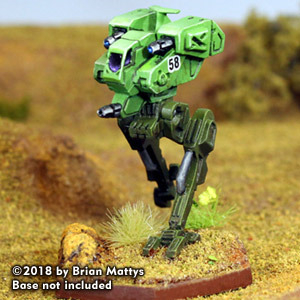





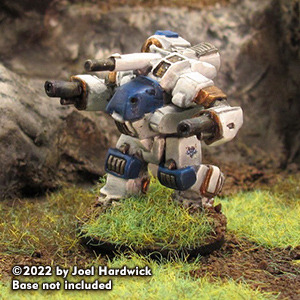

Restocks are up for BattleTech!
20-206 Huitzilopochtli Assault Tank "Huey" (Standard)
20-217 Crusader CDR-5K
20-236 Marauder IIC 2
20-298 Archer ARC-6W
20-324 Tundra Wolf
20-347 Galahad "Glass Spider" 3
20-350 Ghost GST-10
20-361 Thorn THE-N
20-367 Spider SDR-7K / SDR-7K2
20-385 Scarabus SCB-9A
20-398 Shrike SHK-VP-A
20-410 Malak C-MK-O Invictus
20-431 Ocelot
20-481 Maultier Hover Vehicle (2)
20-485 Balius Prime / B / C
20-5001 Eagle Fighter EGL-R6
20-5008 Flamberge Prime
20-5019 Kestrel VTOL
20-5040 Mad Cat MKII (Enhanced)
20-5049 Carnivore Assault Tank (Standard) (2)
20-5059 Septicemia E
20-5080 Vulture MK IV Prime
20-5088 Hollander III BZK-D1
20-5102 Eyrie (Standard)
20-5105 Cardinal Transport VTOL
20-5110 Carronade CRN-7M
20-5117 Kodiak II (Standard)
20-5122 Tenshi TN-10-O Prime
20-5126 Gun GN-2O Prime
20-5133 Gotterdammerung GTD-20S
20-5134 Juliano JLN-5A
20-5139 Roadrunner RD-1R
20-5140 Ostscout OTT-7J
20-5148 Flea FLE-14
20-5151 Avalanche AVL-1O
20-5153 Uziel UZL-2S
20-5183 Locust LCT-1V
20-5187 Dominator
20-5193 Hierofalcon Prime / A
20-5197 Wolverine WVR-6R / 6D
20-5204 Stormwolf Prime
20-623 SRM Carrier (2)
20-627 LRM Carrier (2)
20-634 Epona Pursuit Tank Prime (2)
20-638 Rakshasa MDG-1A
20-642 Berserker BRZ-A3
20-645 Ha Otoko (Standard)
20-702 Corsair Fighter CSR-V12
20-712 Shilone Fighter SL-17
20-722 Anhur Transport
20-725 Cavalry Attack Helicopter
20-727 Karnov UR Transport
20-741 J-27 Tow Vehicle, Thumper towed gun, trailer, and boxes
20-766 Lynx LNX-9Q
20-779 Manticore Heavy Tank (2)
20-780 Hussar HSR-200-D
20-786 Hachiman Fire Support (Standard) (2)
20-790 Salamander PPR-5S
20-800 Hex Bases (4)
20-822 Demolisher Tank
20-825 Bulldog Medium Tank (2)
20-912 Kingfisher
20-956 Tessen TSN-1C
20-990 Lightray LGH-4W
99-201 Large Flat Top Hex Base #1
99-202 Large Flat Top Hex Base #2
BT-004 Afreet Battle Armor
BT-006 Phalanx Battle Armor
BT-028 Cavalier Battle Armor
BT-128 Tornado Battle Armor
BT-129 Infiltrator Mk I Battle Armor
BT-133 Corona Battle Armor
BT-134 Gray Death Legion Battle Armor
BT-178 Jade Hawk JHK-03
BT-187 Djinn Battle Armor
BT-188 Nighthawk Battle Armor
BT-189 Kobold Battle Armor
BT-198 Tengu Battle Armor
BT-199 Asura Md. Battle Armor
BT-200 Shedu Assault Battle Armor
BT-201 Nephilim Assault Battle Armor
BT-208 Triton ProtoMech
BT-209 Se'irim Medium Battle Armor
BT-214 Deva Dominus
BT-222 Tau Wraith
BT-226 Fast Recon
BT-230 Kopis Battle Armor
BT-236 Ravager Battle Armor
BT-244 Heavy Infantry - Standing
BT-245 Heavy Infantry - Firing
BT-250 Ignis Infantry Support Tank
BT-269 Sling SL-1G
BT-293 Hitotsume Kozo HKZ-1P
BT-319 Wheeled APC
BT-321 Hover APC
BT-335 PWWKA S-PW-1LAM (Air Mech)
BT-364 Gabriel Hovercraft
BT-370 Kurita Infantry (3)
BT-371 Davion Infantry (3)
BT-372 Savannah Master Hovercraft
BT-374 Roc Protomech
BT-381 Basic Inner Sphere Battle Armor (3)
BT-383 Longinus Battle Armor (3)
BT-385 Grey Death Legion Battle Armor (3)
BT-387 Gnome Battle Armor (3)
BT-388 Salamander Battle Armor (3)
BT-390 Fa-Shih Battle Armor (3)
BT-391 Fenrir Battle Armor (1)
BT-413 Marauder Battle Armor
BT-414 Niso Attack WiGE (Standard & Support)
BT-433 Warwolf H
BT-476 Ares ARS-V1E Apollo
FT-027 Gotha Mech Scale Fighter
OP-080 Mad Cat E Left Arm
OP-115 Heavy Lasers
20-203D Solitaire Main Gun
20-410F Malak Hatch Cover
20-917ARM Nova Cat (Omni) Arm Sprue
BT-292G Shiro SH-2P Banner
BT-294F Hatamoto-Suna HTM-30S Banner Sprue
#battletech#alphastrike#ironwindmetals#battletechalphastrike#miniatures#catalystgamelabs#battlemech#battletechminiatures#battletechpaintingandcustoms#mecha#tabletop#tabletopgames#tabletopgaming#wargaming#wargames#hobby#scifi#sciencefiction#miniaturepainting#mech#hovertank#6mmminis#6mmscifi#feldherr#dougram#gundam#robotech#armypainter#thearmypainter#chessex
34 notes
·
View notes
Text
November 24th, 2023
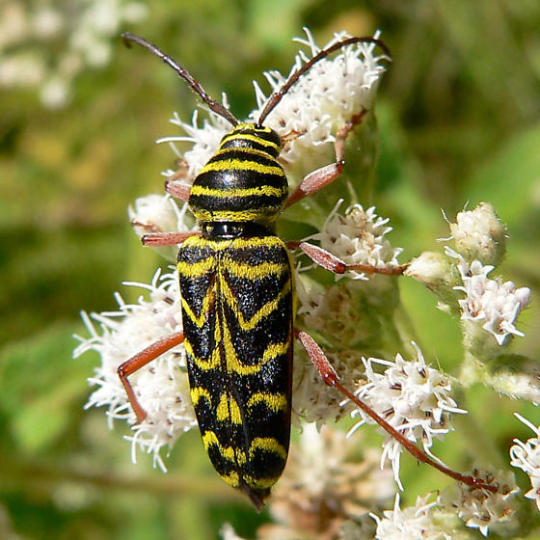
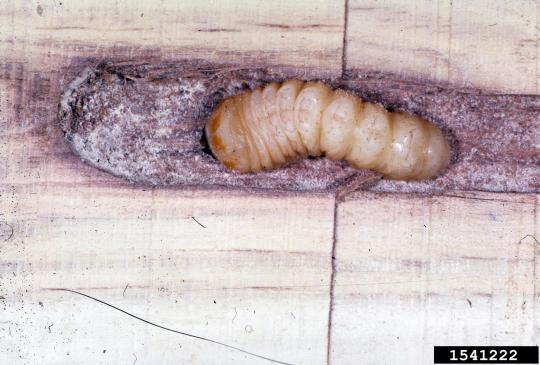

Locust Borer Beetle (Megacyllene robiniae)
Distribution: Originally found only in the northeastern USA, but now found throughout the USA and southern Canada.
Habitat: Usually found in areas where the black locust tree Robinia pseudoacacia is present, especially where goldenrod can also be found; usually uncultivated fields and meadows.
Diet: Larvae feed on woody tissues of the black locust tree; adults feed on the pollen of goldenrod flowers.
Description: The locust borer beetle is a serious pest of black locust trees, singlehandedly destroying the value of what is otherwise an extremely valuable timber tree. Female beetles lay their eggs near wounds or in crevices, where newly-hatched larvae will overwinter. In the spring, they bore into the tree bark, forming tunnels 10 centimetres long and 0,7 centimetres wide. These tunnels serve as an infection site for fungi, which can infect the trees and render them stunted and diseased. Trees suffering from drought and those growing in open areas, like roadsides, or in eroded or nutrient-deficient soil are especially vulnerable to attack. This species isn't known to feed on any other tree species.
(Images by 1) Marcie O'Connor (adult), 2) Lacy L. Hyche (larva) and 3) James Solomon (damage))
11 notes
·
View notes
Text

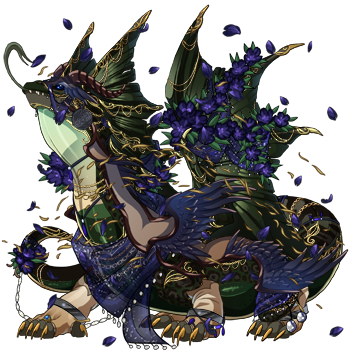





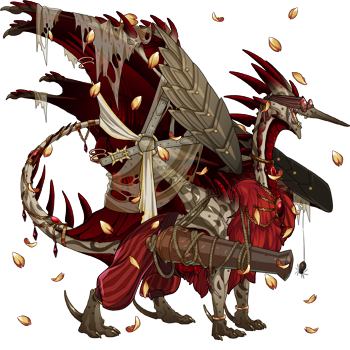

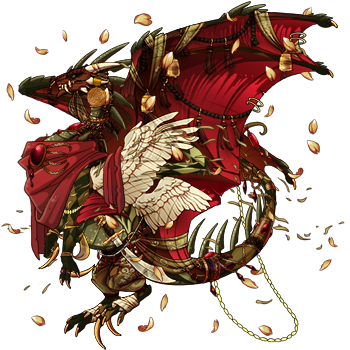
now 2 show off bc im happy and thrilled. my first triple, and all of my present doubles!
Norve - XXX Shale
Pentes - XYX Hunter/Forest (One off triple!)
Locust - XYY Brown/Buttercup
Bawkrya - XYY Moss/Black (Self Anniversary Hatch <3)
Zenth - XXY Strawberry/Fern
Unnamed - XYY Coral/Leaf
Jinyu - XYX Orca/Aqua
Damor - XYY Beige/Sanguine
Anati - XYY Dust/Olive
Quog - XYX Moss/Red
#FR#Flight Rising#one day ill name my leaf double.#Norve#Pentes#Locust#Bawkrya#Zenth#Wu Jinyu#Damor#Anati#Quog#damors outfit is super temporary i need to figure out what i want to do w him lore wise n ill prolly get a custom
7 notes
·
View notes
Text
jimmy & dennis or dennis & jimmy
morrison wanted nothing more than to
hear the butterfly scream -
i merely want to return
to the locusts
can you hear them sing?
can you hear me sing?
can you catch me man?
hatching my plan
Before I sink
Into the big sleep
I want to hear
I want to hear
The scream of the butterfly
- (morrison)
and to think,
these letters written in ink
fall on deaf ears
but the eyes can't hide
can you see them in your sleep?
can you feel them in your soul?
can you understand me man?
hatching my plan
6 notes
·
View notes
Text
Apothecary Diaries | WN Translation | Arc 9 - Chapter 12

Hey, whichever way you found this: Welcome!
For a couple of reasons I ended up here - I relay all that happens in the chapters, playing wine-aunt, as I translate to the best of my abilities.
So, be warned, all the spoilers are waiting down below. Want spoilers - but less? My dm's/asks are open!
New here? Here's the Masterlist.
Enjoy!

Chapter 12 | Farming
For the next two days, Maomao and the others helped Nenshin with his work.
Which was pretty close to the answer Maomao was looking for.
Narrator-Mao leads us through the explanation that, after putting the hoe in the ground and turning over the damp soil, they found worms, ants and small beetles - as well as long masses/clumps, where a closer look revealed that they were eggs/egg masses.
The chicken that had been pecking at the worms then pecked at the egg mass. In her head she wonders “Locust eggs?”
As narrator she lets us know that she would’ve liked to calculate how many there were per tan, but that she didn’t have the time to do that. Once she found an egg the chicken had missed, she picked it up and put it in a jar.
In her mind she notes how many there must be.
Narrator-Mao goes on talking about how people who hate insects would go crazy about this, even if the contents of her jar are still few. Despite being used to dissecting locusts, it’s not something she wants to see or likes either.
Meanwhile she lets us in on the fact that Lahan-nii, the expert farmer, had a special way of holding the hoe - while Basen had his incredible strength and how different the amount of soil is they have to dig up.
In her head she’s just glad that Basen is doing things right.
Narrator-Mao tells us that she’d been worried he’d refuse, because it’s not the job of a soldier, but apparently she was lucky that Jinshi cared about locusts quite a bit. So, Basen quietly helped her.
Thanks to that, she fills us in, the guards and farmers they’d brought along were also helping her. It looks like they’ll be done with the digging by the end of the day.
In addition, Chue - who had joined before they knew it - was moving around near the two of them, collecting locust eggs. Two children were behind her. They’re the siblings that ate the roasted sweet potato - and they seem to think that if they help they’ll get more of them.
“Maomao-san, there are a lot of them, would you like to see them?”
“Chue-san, I don’t want to see them. If it’s mantis eggs, I’ll take it.”
Mantis eggs, she tells us, are used as a medicine called Sohyosho. Since it can’t be acquired in large quantities, it’s quite valuable. (that’s real btw)
“The eggs here are about to hatch. A small one’s coming out.”
“It’s already spring, isn’t it?”
One generation of flying locusts is as long as 3 months, starting march. It's said that they lay about 100 eggs each at a time. This is what was written in the encyclopedia that was in the Shi clan’s fortress. Those born in spring lay new eggs in summer.
They don’t breed all year round, and at this time of year, the eggs laid in the fall are hatching. The eggs are laid hidden in the ground, exposed by akiko/autumn plowing - and once exposed, they become food for birds and small animals.
Maomao wonders, in her mind, if Lahan (the actual one) hadn’t said that before.
Narrator-Mao notes something about him having mentioned rat/mousecalculation.
One pair of mice births 12 children - making the total 14. Of those 12 children, 6 females and the mother bring 7 more pairs into the world - from which, each of them births another twelve.
Of course, this formula is just a theoretical calculation. Not everything grows without dying.
If the number of locusts were to increase in the same way as this rat-calculation, it will be important to reduce the number at an earlier stage.
She calculates in her head that a mass of locust eggs is about 100, 100 times ten is 1000, 100 times 100 is 10.000.
Narrator-Mao goes on that, if they were to get rid of them now, they could lower the amount of locusts appearing later by many times - and that it seems locusts lay their eggs in areas that are moist to some degree.
She thinks that, since there’s a river nearby and plenty of grass to feed on, this area is the perfect spawning ground.
Then notes as narrator that the reason why they (villagers) didn’t dare to cultivate a field is probably to attract locusts.
At that point Nenshin approaches her, a glass of locust eggs in hand.
“Now all that’s left to do is burn them.”
“That’s good to hear.”
“Ah. Last year I missed a lot of locusts because I was late with this.”
Narrator-Mao recalls that a farmer of this village had also said that they had a lot of damage from locusts the year before.
“Was the yield quite small?” She asks and Nenshin nods.
“We don’t have any savings, just what we eat. If we pay taxes, we’ll starve. We would no longer be able to afford to buy daily necessities from peddlers, so we would have so sell our cattle.”
“But you said that the feudal lord not only exempted you from taxes but also gave you support.”
“That’s right, he’s a really nice lord.” Once again, Nenshin made a face as if he was going to throw up.
Maomao then asks him directly something along the lines of “What is it that you don’t like about that? It seems like you have a thorn in your side/like it's a thorn in your eye.”
Nenshin explains that, he’s not saying this as former bandit, but they(village people) are just trying to take what they can get. To him, they’re like locusts. If you don’t want to starve, you should take proper care of your field - so that you don’t starve.
Maomao asks if "that’s why" - the reason why the fields in this village aren’t well taken care of is that.
Nenshin responds: “That’s right. It was the same with last years bugs.” and goes on to explain that while they were disgusted, looking at their fields being eaten with dismay - the village chief was always thinking about how he could get the sympathy of the lord, always thinking about how he could make him cry. Nenshin felt like a fool, pulling off the locusts that were biting the leaves and killing them one by one.
Narrator-Mao wonders if the fear of past locust plagues has changed Nenshin - because this doesn’t seem like the behavior of a former bandit who has done all kinds of evil deeds.
She then corrects herself in her mind: No, that’s wrong.
As narrator adding that, from the start, Nenshin probably had an earnest/serious personality. He was born and raised as a bandit, so he learned how to use a bow and started killing people as he was told.
Ethics isn’t something you are born with.
“And judging from the current atmosphere in the village, it seems like they received a lot of money.”
“Right. This hasn’t changed in the last ten years. Even if the harvest fails, the lord will help us. He’s a good lord to everyone.”
In her mind she wonders “Good lord..”
Narrator-Mao wonders where the money for this support comes from. It could be extracted from trade. If Saito was that prosperous, it’s fine to send the money to rural areas.
“If you’re making the money, I think it would be better to build at least one of those waterways/canals.”
She goes on, as narrator, that the less labor is involved in transporting water, the more different work can be done. They could even cultivate new fields.
Nenshin admits that that’s what “that man Rikuson” had said too - Maomao replies with a simple “Is that so.”
Narrator-Mao then tells us again that, once she’s back in Saito, she has to find out how Rikuson found out about the former serf’s existence.
(And then, after all this, days worth of work they did for him, mind you……..)
“By the way, I’m sorry to ask you to help me with my work, but don’t you have other business in this village?”
“Business…….” - Maomao rests her chin on the handle of her hoe and closes her eyes.
“Ah!” - Maomao looks around. She approaches Lahan-nii, who isn’t only digging up the soil but also starting to make ridges.
Maomao: We won’t plant anything here.
Lahan-nii: ?!
She thinks “Shit, he’s making his usual face.”
He(?) denies it, but the farmers are completely on board.
“By the way, aren’t you going to spread the popularity of potatoes? I think that’s why you brought the seed potatoes.”
“..... that’s about it.”
It seems like Lahan-nii has something on his mind.
“The people here have no willingness/motivation to work in the fields, right? If they were to produce more potatoes, do you think they would cultivate them properly? They probably won’t use the old fields for new crops, and I don’t think they have the willpower to cultivate new land.”
“Certainly/Indeed.” Maomao is convinved.
Lahan-nii says that that’s why he wanted to meet the only person who cultivated a decent farm.
Maomao catches on, goes “So that’s what it’s about.” but Lahan-nii already knows better as well: “But I don’t think that old man can do it.”
Maomao agrees, with a simple “It’s impossible, I guess.”
The last former serf of this village. In addition to working on his own field, he also has to perform the fall plowing ceremony, which is called a ritual. Work that was supposed to be completed in fall, continuing into the spring, so no matter how you look at it, there’s not enough manpower.
“Can’t we just leave one person here to help?” They look at the other farmers.
Lahan-nii argues that the people he brought with him are here because he is *in case she’s wondering*. It’s not good to be left behind in an unfamiliar place/You can’t just leave them in an unfamiliar land, in the middle of nowhere.
They seem to have been brought all the way from Hisashi-Shuu.
“Right.” - Narrator-Mao notes that Lahan-nii acts like an older brother in the strangest ways - and that, if he had been born into a normal family, he would’ve been a good eldest son. (damn girl)
Lahan-nii adds that he’s glad his father isn’t there - and something about how he said he’d show them the potential of potatoes yet he didn’t actually know what to do. (the second part’s not wanting to be read, clearly.)
Maomao then says something along the lines of “Let’s at least make the sweet potatoes tasty….. Potatoes……” (it’s a fragmented sentence I can’t make full sense of)
Maomao looks at the two children clinging to Chue’s back. She sets down the hoe and approaches them.
“Hey, you want to eat the sweet potato again sometime”
“Want to eat!”
“I want to eat it! I want to eat!”
The sibling's eyes sparkled.
“It’s my first time eating something so sweet. It was sweet like a raisin.”
“Raisins?”
“Sweets are precious around here. There’s no honey and sugar is a luxury item.”
Chue spins around with a large jar on her head.
“... I wonder, can we use that/Could that work?”
Maomao grinned/chuckled and returned to Lahan-nii.
| Notes & Chapter 13
At long last, a chapter that didn't completely hate being translated.
There's not much to say this time. There is the expression thing where it's not quite clear for me if Maomao is pulling an expression or if it's Lahan-nii, but we'll survive that. The same goes with where Nenshin has the thorn.
I honestly just love it for Nenshin that he waited days, until they were about to wrap up all the work, before asking if it's fine for them to spend all their time with his task. Just, gold.
Anyway, I hope you enjoyed this one. I'll see you soon with the next. Stay safe!
13 notes
·
View notes
Text
Driving around random places in Germany, like, the smallest who-cares towns and villages, reveals its massive history and how these region was so important and culturally richest in Europe. But tall highs mean deep lows sometimes I guess. We stopped at Deggendorf recently on our autobahn trip for the night - normally we choose some scenic city and also look around, but weather was bad - so anyway here's that sob of a town, some tiny old town center, but otherwise a 30k population dustbin. When quickly walking around - really nice and busy market with lotsa social life on weekdays as well which I always admire here - as the only attraction is the standard german unit of one medieval town hall and one old church, both rather nice and somewhat reconstructed since the town was mostly leveled during WWII (also a standard german unit of history).
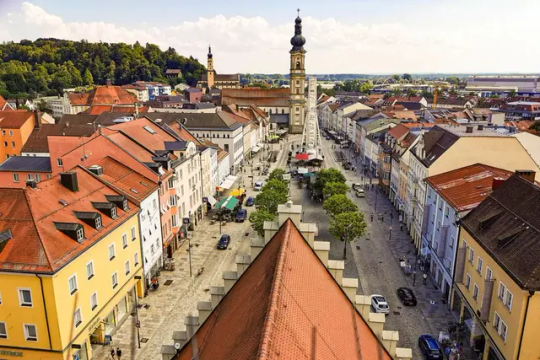
Kind of sad to see murals from the 50s on a 14th century church, in place of probably much grander artworks.


But there is a small tablet hanging on the side.

"In 1383 the jews of Deggendorf were killed…the legend that emerged to justify this crime...is false…the slander perpetuated over centuries not only distorted the memory of Jews in the Middle Ages but also harmed the reputation of their descendants into the recent past."
Ehm, ok why? It's internet search and dismayment time! Ahm, how wonderful, this was the place of one of the best covered up vile pogroms in late medieval times in the area! Story time.

So it happened in 1337 that a large fire broke out, consuming most of the town. Reconstruction was hard, and the needed money came primarily from lenders/bankers, who, by medieval tradition (more like a necessity, as lending was a sin) were the Jewish people. Besides only being able to practise a few crafts to earn a living, these families already had to pay protection money to the king for free practising of their religion ("Reichssteuer"), and were a closed community. Now the whole town was indebted to them.
In the summer of 1338, a plague of locusts destroyed the harvest. Meanwhile, it was thought, the jews of the town lived a good life from their interests. On the eve of September 30, a day before the usual day of next payments, they thought of a good solution: townsfolk surrounded the jewish quarter and looted and murdered everyone in it. And… nothing happened.

Probably to suppress revolt in an unstable time, Duke Heinrich XIV of Bayern pardoned every participant, and signed a decree allowing "finders keepers" on the belongings and houses (meanwhile divided among themselves) of the massacred. In addition, "the bonds, mortgage deeds, and other documents held by the Jews, or what they should have otherwise repaid to them, shall be completely annulled". To not much surprise, this move resulted in further pogroms and killings in the whole region. However macabre, all that is was still a rather common occurrence in western Europe. What happened in later times makes it stand out.
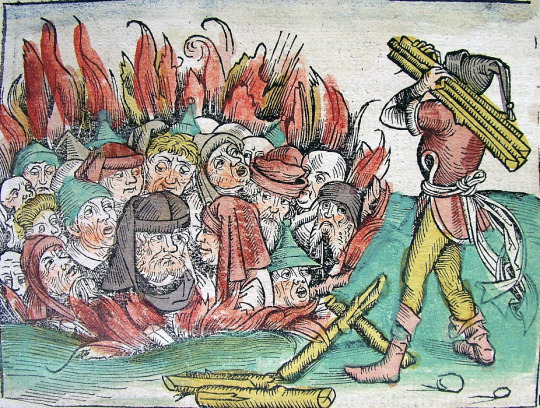
Killing folks - even if "godless pagans" just because you owed them money, getting off for free, and then living in their houses is not such a cool story to tell to your children. Decades after the massacre a new narrative started to emerge. Folk songs and stories started to appear telling another version of the story: the Jews of Deggendorf hatched an evil plan and stole the Sacrilege from the church, trying to smelt it into coins. The Sacrilege cries and bleeds, child Jesus and Virgin Mary appear, alerting the townsfolk, who rush to rescue but a fight and fire breaks out. But the Sacrilege miraculously survives and hovers in the sky (:DD) descending on a monk who immediately becomes a miracle healer, promptly building a temple in the city to safekeep it.

This is the legend of "Deggendorfer Gnad" (Grace/Miracle of Deggendorf). In the following decades, 17 huge oil paintings were made and hung in the church to tell the story in vivid images for every visitor. Pamphlets were printed and distributed, songs being sung, and trinkets sold. The legend of the miracle spread far and wide, and soon Deggendorf became the largest pilgrimage site of the area.

Then there were the "Gnademarkt" market days hosting merchants selling textiles, household items, candles. In 1737 they recorded 140 thousand visitors. The church building and its decorations expanded heavily, featuring now a baroque tower and an expanded altar with vivid sculptures of Jewish figures using their hammers to smash the Sepulture.
As soon as the 18th century Enlightenment, notable politicians and writers lashed out against the festivities and the pilgrimage as being antisemitic, which voices grew louder in the next century. If you expect the story to end with "after the Nazi regime and WWII this festivity also ceased to exist" then, well, no, Deggendorf welcomed tens of thousands of pilgrims throughout the 20th century. The bishops of these decades defended the tradition that it's "part of the Bayern folklore" and harmless, "it doesn't glorify the murder" and "no amount of articles and pamphlets will stop it". To ease up the situation a bit, the church changed the festive theme a bit from miracles "the sins of the pasts, in medieval times to the 20th century" In 1968 bishop Rudolf Graber changed the plan to create a professorship in Judaic Studies in the newly formed University of Regensburg. Instead, he created one in Dogmatic Theology - the position taken by a certain Joseph Ratzinger, if the name rings a bell. This didn't stop researchers to study this story more fully, although with less funding thereon. Church historian Manfred Eder's dissertation in 1992 was the first work that comprehensively revealed the historical background.
Only in the aftermath of this study did the festivities stop for good the next year.
4 notes
·
View notes
Text
Read Me!
See blog header/sidebar for an idea of what's OK to Ask! (Listography was feeling a little oppressive)
Bio posts subject to tinkering over time. Better art/refs pending available energy/interest!
I've set all the links to go directly to bio posts rather than tags, since tags can be followed from there.
============================
CLASSIC SETTING
--DWN(s)--
- Slash Girl - "Crash Girl" -
--Dr. Harp Labs--
- Dr. Taylor Harp -
- Tokay Woman - Reach Woman - Gutter Woman - Heavy Woman - Nail Woman - Slag Woman - Pack Man - Hatch Woman - Snap Woman - Shell Woman -
--Space Numbers--
- Antares -
- Eris - "Queenie" - Kagekiri - Betelgeuse/"Khepri" -
- Ankaa -
--God's Servant Numbers--
- Psalm - Hymn - Choir - Dirge -
============================
ALTERNATE SETTINGS
Hosted on my Main and not technically 'part' of Remes, but keeping track of them here as well for organization purposes
--Battle Network--
- SlashGirl.EXE - TokeiWoman.EXE (2) -
--"Gothic"/Fantasy AU--
- Sevenths - Other -
-----------------------------------------------------------------------
-----------------------------------------------------------------------
What the heck does "remes" mean and why is it relevant to Mega Man OCs??
רֶמֶשׂ
It's the Hebrew word for animals that "creep" upon the ground as used in the Bible to describe things like lizards and insects, especially in the Book of Genesis.
It's meant to play off how a majority of my OCs have overlapping themes of either reptiles, gastropods, arthropods, or (on the other end) biblical themes as with the GSNs (with Dirge's status as a 'locust' bridging them).
It is simply a nod to my own religion and my habit of working it into my creative space; it is in no way meant to indicate political allegiance or any condoning of atrocities committed by those wielding that language.
2 notes
·
View notes
Text
Apes: a shrewdness
Baboons: a troop
Badgers: a cete
Bass: a shoal
Bats: a colony, cloud or cauldron
Bears: a sloth or sleuth; Cubs: a litter
Beavers: a colony
Bees: a swarm
Boar: a sounder
Buffalo: a gang or obstinacy
Camels: a caravan
Caterpillars: an army
Cats: a clowder, glaring, pounce, nuisance or clutter; Kittens: a litter or kindle; Wild cats: a destruction
Cattle: a herd or drove
Cheetahs: a coalition
Chickens: a brood or peep; Chicks: a clutch or chattering
Clams: a bed
Cobras: a quiver
Colts: a rag
Cows: a kine, drove, herd or fold; twelve or more cows are a flink
Coyotes: a band
Cranes: a sedge
Crocodiles: a float or bask
Crows: a murder
Deer: a herd
Dogs: a pack or cowardice; Puppies: a litter
Dolphins: a pod
Donkeys: a drove
Doves: a dule
Ducks: a brace, paddling or team
Eagles: a convocation
Elephants: a herd or parade
Elk: a gang or herd
Emus: a mob
Falcons: a cast
Ferrets: a business or fesnyng
Finches: a charm
Fish: a school, shoal, run, haul or catch
Flamingos: a stand or flamboyance
Flies: a swarm, hatch or business
Foxes: a skulk or leash
Frogs: an army or a colony
Geese: a gaggle or flock, a skein when in flight
Giraffes: a tower
Gnats: a cloud or horde
Goats: a herd, tribe or trip
Goldfinches: a charm
Goldfish: a troubling
Gorillas: a band
Grasshoppers: a cloud
Greyhounds: a leach
Hares: a down or husk
Hawks: a cast or kettle
Hippopotami: a bloat or thunder
Hogs: a drift or parcel
Horses: a team or harras
Hounds: a pack, mute or cry
Hyenas: a cackle
Jaguars: a shadow
Jellyfish: a smack or brood
Kangaroos: a troop or mob
Larks: an ascension or exaltation
Lemurs: a conspiracy
Leopards: a leap
Lice: a flock
Lions: a pride
Locust: a plague or cloud
Magpies: a tiding or tittering
Mallards: a sord
Manatees: an aggregation
Mares: a stud
Martens: a richness
Minnows: a steam
Moles: a labor
Monkeys: a barrel, cartload or troop
Mules: a pack, barren or span
Nightingales: a watch
Otters: a family, romp or raft
Owls: a parliament
Oxen: a team or yoke
Oysters: a bed
Parrots: a pandemonium or company
Partridges: a covey
Peacocks: a muster or ostentation
Penguins: a colony
Pheasants: a nest, nide or bouquet
Pigeons: a flock or flights
Pigs: a drift or drove (younger pigs), or a sounder, litter or team (older pigs)
Ponies: a string
Porcupines: a prickle
Rabbits: a colony or warren
Raccoons: a gaze
Rats: a colony, pack, swarm or mischief
Rattlesnakes: a rhumba
Ravens: an unkindness
Rhinoceroses: a crash
Sharks: a shiver
Sheep: a drove or flock
Skunks: a stench
Snakes: a nest or knot
Sparrows: a host
Squirrels: a dray or scurry
Starlings: a murmuration
Stingrays: a fever
Storks: a mustering
Swans: a bevy or lamentation, a wedge when in flight
Tigers: an ambush or a streak
Toads: a knot or knab
Trout: a hover
Turkeys: a gang, posse or rafter
Turtles: a bale or nest
Vultures: a venue
Wasps: a pledge
Weasels: a colony, gang or pack
Whales: a pod, school or gam
Wolves: a pack or route
Wombats: a wisdom
Woodpeckers: a descent
Zebras: a zeal
#my dad posted this and i had to share it#‘conspiracy of lemurs’ sounds like a monty python bit#animals#text
2 notes
·
View notes
Text
Nymphalis Antiopa
A precursor to Happy Birthday. A fanfic featuring Zhask and his little pet spawn, Meric. You can reread Happy Birthday after this to get more of that feel, y'get me? Trust me, it hits SO MUCH DIFFERENT after you know what happened prior.
---
Notice: This fic features angst and character death, mostly prevalent at the end. Part of the fic may or may not be a reflection of the author's fear of losing loved ones.
I rarely write, so here I'd like my writing mentor @sentinelpri to react to this if you'd like to. Don't force yourself to, it's fine! Take your time!
And thank YOU so much for the support these past few, love you guys so much.
---
The air was cold, far too cold to sustain any living creature on the frozen earth. But the King of the Kastiyans, Zhask, was not of the planet and so he tolerated it with a flickering vision.
Still, it wasn't as if he hadn't been on edge the past few days. The freezing winds had devastatingly scrambled his DNA (or the alien equivalent of it) and now the only colours he could see were white, blue, and black. Red was out of the question entirely. Kind of like the various insect species he could find in the Land of Dawn, some more similar to his own self than others.
His mind wasn't leaning against the comparison of it though. Rather he was lost in deep thought, staring off into the horizon. To be fair, he himself didn't know what he was thinking about either. Was it the spawn eggs hatching slower because of the Northern Vale's climate? Was it the Swarm he had accumulated in such a short time through extensive research and breeding hacks? Was he thinking about the young huntress dispatched by the Mithlorians?
Ah yes, the young equilibrium. So strong and unconquerable! Such a formidable foe, capable of hauling arse and kicking his too. Just his type, if the universe would let it be. Zhask wished it would. He thought that kind of one-sided love existed only in fiction. Well bug boy, pack your locusts because you're living it.
The humming of the twinkling breeze fell deaf to his ears as he reminisced of their first encounter. The day the prey fell for the hunter. The day Kastiya fell....
Kastiya.
Zhask's breath hitched, but it wasn't of the cold.
He remembered the planet he once lived on. Where he grew up, albeit traumatically. Where he had nobody to befriend or to bully. Where he spent his days alone save for dinnertimes and specific sessions.
But it was home after all, and his sentimentality got the better of him.
He remembered how the musicians on the street rubbed their instruments together, enhancing the atmosphere of the farmer's market. He remembered how the little spawns, used to mercilessly annihilate various other weaker planets, became ever so docile and tame in the presence of the Kastiyan children. He remembered the clear crystalline sky and how often he'd stare into its abyss, hoping that one day his life could change for the better.
It probably did, it probably didn't. Who's to say? Stranded on a deserted island with a living colony on a powerful planet to call home... being hunted down by his lightyear-to-lightyear crush... seeking a Kastiya II....
Freedom was what he'd wished for, and he was free now, so why did it still feel wrong?
Choo-choo! went Zhask's train of thought and farther on it went as he sifted through all the good memories he could find of his life back in Kastiya. They were few and far between, punctuated by tasteless shame and wrongdoings, but they existed nonetheless. It was hard to find one he hadn't repeated a thousand times, but he still tried to revisit something at least.
A few moments later, he came upon a memory he hadn't indulged in in a long time.
He was just a little grub, plump and stuffed full with salad dressings, rotten wood, and nuts. A king's boy, a prince soon to be larger than his own two parents. A squishy little smile spread wide upon his face.
His birthday.
A few moments prior Zhask had just emerged from his cozy little egg (which was getting too big for him at the time) and greeted the world with a sniff of the air and the smells of the food it brought with it. Imagine that! climbing out of your humble abode and the first things you sensed were nutritious meals fit for a king! No wonder he grew up to be a foodie!
His first taste was that of decaying wood crackers and boy did he love it; so much so that even now he finds the time to traverse the Land of Dawn to gnaw on some trees. He had so much to eat, he remembered, that he almost didn't notice the procession he was being brought into.
And there Zhask caught a glimpse of his kingdom.
Cheers eurupted from the diverse crowd, excited to see their future monarch. Lights of all colours and shapes decorated the pathway. He was being paraded through the streets in a little earthy carry-on pouch he would soon outgrow. It was overwhelming, but as long as he had his leaves to chew on, he was certain everything would be alright.
He had his future told to him and choirs sung to his birth. He was given a tour of the entire planet with no space left uncovered. He was given various gifts from various individuals with various talents. He was even visited by a strange one-eyed figure, a magician he could no longer recall the name of, who became one of his only friends the world had to offer. They were no longer in touch now, but he hoped they could meet again soon.
Then came the moment he met his army. The Spawn. They bowed down to him and swore in their own chittering language to forever remain loyal to him and whatever cause he stood for.
And then it was time for bed. Thus the memory ended.
His first birthday. The most precious memory he'd kept for so long.
Zhask couldn't recall many other birthdays with similar proceedings or events. All others were mostly standard ones, nothing special (despite all of them being special in their own special way to him). There WAS one where he was given his staf- no that was the seventh anniversary of his coronation day.
A slight tap on his foot brought the wandering king back to reality. Looking down, he met a young spawn. It seemed freshly hatched and curious of the world.
Much like him when he was younger.
He knelt down and picked it up with barely any resistance save for a shocked bounce from it. It was small, smaller than the average size, but that was nothing to discriminate of. So was he, once.
The sentiment Zhask felt for this particular spawn grew into a blooming wheatfield and he affectionately decided to name it and officially designate it as his personal pet. Now if only he could find a name....
Now, he was one for creative names chock-full of symbolism. Which word should he pick for this little one. He thought it should be close to that of Domorey, the Nightmaric Spawn enslaved to his bidding.
Nightmaric... yes, Meric would do.
He spoke it, and the singular eye of the critter beamed bright red. Or at least presumably, given his apparent colour-blindness. No matter. The deal was sealed and now little Meric was precious to him.
Now where was he? Birthdays? No, back to the beginning. Yve? No, way farther back.
Ah yes.
What day was it?
Turning on his claws, Zhask trekked back to his cozy little haven. A small cove full of stolen trinkets and other miscellanous finds, with a few larger spawns guarding the area. Setting down Meric into a little wooden chair he built himself from driftwood, he began to sift through the yellowed pages of a record book by his nestside.
Fourteenth of January... twenty-fourth of March... first of April... ahh yes, toda-
Today was his birthday.
And he had completely forgotten about it.
Time seemed to pass by a lot slower in his current area so he still had some spare hours to spend. But what should he do?
He asked Meric, awaiting an answer, but the little spawn could only chirp and chitter out its reply. Food, sleep, kill, and other similar answers.
But he still wasn't satisfied, so he paced around his room.
Fortunately, his gaze came to turn upon a desk of documents worn with age. His old writings. He remembered the tales he used to string like fine-woven silk. His father never liked it, though his mother inspired him in any way she can. He'd always been a mama's boy as far as he could tell. The memory brought a bittersweet smile to his face.
Who knows if anybody was even still alive after the explosion?
Those cursed Mithlorians, meddling around with business they should've left for casual. Now instead of sportlike destruction, they had brought a plague upon the universe. Even the young Yve, he admitted reluctantly.
A sense of homesickness washed over him, and it seemed Meric could feel it too. It chirped a little click which caught Zhask's attention. Yes, going back to search Kastiya for anything was probably a good way to spend this special day. It was probably going to hurt him, but anything was better than staying one more second in this snowstorm.
So once more he picked up his precious Meric and, with a memo to his guards, set off to a place where he could safely teleport to Kastiya.
Tunneling below the Earth for about half a mile away from his base, he emerged from the ground and walked on five more, just to appease his inner anxieties. As soon as he saw that it was probably enough distance that he might not be traced back to his humble abode, he stopped in his tracks and set down Meric on the cold white powder underfoot.
For his tenth birthday, he had learned how to make portals, and the risks of them as well given how messed up the time-space continuum could get. He had made a few in his lifetime, and they had never failed him once. He wasn't frightened of the risks either, given how his mental capabilities were stronger than most other Kastiyans.
But he had to make this one last. He had an agenda in mind, and he was not holding back on it. He realised that he forgot to bring Domorey with him, but no matter. The space-time rift energy she had absorbed was majoratively transferred to him. He chuckled at the thought of the reason why Yve never caught up to him on time: every single time he passed through the portals, Domorey would suck just enough of its energy to alter its coordinate-perception and send Yve to a different area than him. And that energy he absorbed for backup purposes.
Catching himself up in his dilly-dallying again, Zhask refocused on the task at hand. A finger to his head, he focused his energy on the space infront of him.
Soon, a portal came to life before them, but not to Kastiya. This wasn't what he was looking for.
Reaching into the portal, he extended his claws and slowly curled them until at long last he managed to snag it on something. The fabric of space-time. He pulled on it and the portal burst. It would've killed most individuals, but he'd suffered worse. Also fortunately, poor little Meric was just out of blast-range so it remained unharmed, albeit a little shaken.
The risk was calculated, but the Planes Dominator was good at math. Lo and behold, there lay the foundations of what remained of Kastiya.
His heart sank. He remembered the day. He remembered the screams and shrieks of the young and the old, the strong and the poor, as the flames baked their bodies to a crisp. He could still hear the plagues to his nights, the decay of the only home he ever had. He could stil-
It seemed as if poor little Meric had had enough of this internal monologuing and went to pop its face into space. Its recklessness jolted the mourning king who slapped his face into his palm. Newborns. Absolute nightmares. Thank God he wasn't like that at all when he was younger, or else he would've been more than a centipede-handful for his poor servants and mother.
No worries though, it was space, and the little spawn ended up floating around and bouncing off asteroids in a little spinny square dance. It made Zhask chuckle. He was about to step into it as well when he thought of something he could do.
He placed a hint of rift energy in the folds of the portal.
This would attract Yve.
He had something to tell her.
Stepping through the portal at last, he came to be reunited with poor Meric who was beginning to have a headache from all the asteroid bonking. With one last look at the forlorn portal, Zhask began exploring the ruins of Kastiya.
Of course, there was nothing left save the rubble and rot. It piqued the curiosity of the little spawn but all it did was rouse feelings of guilt and solitude in the monarch's gut. He flitted through the wreckages, determined to find something... or someone... but nothing, and nobody remained.
It was then that he came to an old royal greenhouse his mother once frequented, or what remained of it. She had always loved her flowers and had taught him botany in those very walls. There were many fond memories within the confines of those solid glass panes and many more outside.
Now all that was left was a fraction of what it once was.
Zhask stepped on a piece of glass and recentered his gravity. It broke beneath his feet and he landed inside the chlorophyll-stained room.
It was silent, far too silent. There used to be at the very least a little flutter of wings or perhaps a chittering spawn, but there was nothing here now. Oh well, exploring would be a fine option.
Surely nothing worse could be found... right?
Through glass and thorn Zhask trudged though the greenhouse, searching for relics of a forgotten day and age. He found nothing but rubble. It disappointed him.
He was about to leave when a pile of wood and glass caught his eye. Placing Meric on his shoulder, he dug through the wreckage, curiosity begging him to reach in further....
But as they all say, curiosity killed the cat, and today, it struck the king.
Zhask shifted the rubble to a full extent, but he wished he didn't. For underneath it all was a familiar face, with familiar fur and familiar scales.
"... Sh... Shaloshta...."
("... Mo... Mother....")
There was no mistaking the broken royal tiara and the long, cold, and dead moth eyes.
"Shaloshta... Shaloshta! SHALOSHTA!"
("Mother... Mother! MOTHER!")
He grasped the corpse by her shoulders, and laid her in his lap.
"Shaloshta! Cere di, ralsa mi Zhask!" he cried out in agony. "Cere di Shaloshta, cere di, pavra mi hask! Dis tu khauf bhait! Arka, Shaloshta, arka!"
("Mother! It's me, your son Zhask!")
("It's me Mother, it's me, your little grub! I have come home! Wake up, Mother, wake up!")
But as was Yve in her pursuits, he was too late. She had died far too long ago.
Holding back the tears studded in his eyes, Zhask pulled poor Meric from his shoulders and leaped out of the ill-fated greenhouse. He smashed through rock and tile, through foundations and memories. He didn't care whatever happened to him or his surroundings, he just wanted to get away.
At last, a good distance away, his energy faltered. His spark faded. Fortunately, a chunk of space rock, once bearing a tree fruiting with juice but now a withered stump deviod of all life, came into perspective.
Broken, Zhask sat down on a patch of grassland on the rock and pulled Meric closer to his heart.
He could take it no longer. His heart was to burst.
And as he stroked the little spawn in his hands, he thanked himself for keeping the portal open.
Because there would be no better birthday gift for him... than to finally die as he will live forever onwards.
Forever alone.
#mobile legends#mobile legends bang bang#mlbb#ml#mobile legends fanfic#fanfiction#fanfic#angas#tw angst#angst tw#character death#character death tw#tw character death#zhask#mlbb zhask#meric#kastiya#family#losing a loved one#yve#mlbb yve#zhask mlbb#yve mlbb#zhaskposting#long post
5 notes
·
View notes
Text
Beaches
Okay, let's talk about the elephant in the room. As you know all of my blogs are named after either a movie I have seen or a song I have heard so yes, I did watch the movie Beaches. It was a long time ago and I had just watched the Leafs lose a playoff round and the movie came on later that night. I was vulnerable, and too upset to go to bed so I watched it. There is no need for me to hand in my man card.
This blog is about beaches not relationships, or rather the 5,000 mile wide hazardous algae making it's way to the coast of Florida. Come to think about it a story regarding a large blob that invades your space and affects your way of life could be a relationship story but not in this case.
Many are put off by having to inhale the toxic smells emitted from this thing but not me. I have spent a lot of time with my father and other relatives away fishing where the main foods on our menu were pickled hard boiled eggs and beer. Consume that in a small environment like a cabin and you are prepared for whatever foul smells come your way in later life.
So there are a lot of experts talking about this phenomena and how it is natural, why it is coming, and what will it do. I have my own theories and observations that I will share with you now. If you do not want to know what I am thinking you can stop reading at any time.
God is punishing Florida for what DeSantis has done to Disney. God likes Disney especially Bambi. If I were old Ronnie I would be worried about locusts, frogs or suspicious moles that suddenly appear on my body.
This is something cooked up in a shark lab. (Yes there is one near Atlantis) They will use the algae as cover to get very close to the shore where there is lots of tender pink flesh half drunk and splashing around in the water. A spring break buffet.
Aliens are testing us. They want to see how we react to the unknown before they come for a visit. If algae freaks us out how will we react to beings that have their genitals on their foreheads?
It is part of a plan hatched between Trump and Putin to distract Americans from what else is happening in the world.
Fish fart and there has been a build up of their gas as they ingest all of the toxins we dump into the ocean. Call it unintentional revenge.
Aquaman had diarrhea.
Poseidon did some spring cleaning. He moved a lot of stuff from the main floor up to the attic which just happens to be the surface of the ocean.
Just another spring break event that no one can explain.
One thing that I don't understand. There is concern that the algae is emitting hydrogen sulfide and that it smell like sh#t. Why can't they harvest it and use it as fertilizer making some areas more arable for growing crops?
(I have to go lie down now. Too many big words in the paragraph and I don't really understand what I was saying)
THOUGHT OF THE WEEK: The problem with humans is that we worry more about things that happen naturally than the things that are man-made.
3 notes
·
View notes
Text
entered a fugue state and spat out half a wiki page of info for a fan race of solifugaefolk that live in Hammerfell
Parasoli
The Parasoli are a race of solifugae-like people who hail from the innermost reaches of the Alik’r Desert, known for their dexterity and powerful jaws. They practice a form of stellar magic that is inextricably tied to their unique and in-depth astrological tradition, and many young Parasoli find themselves as initiates in their local stellar temples.
The largest differences between the Parasoli and other races are physical; Parasoli are chitinous and possess four independently-moving jaws, reminiscent of solifugae that live in the deserts. They lay eggs that hatch into young instars, which are similar to the parents except for size, and which will grow over a series of molts until their exoskeleton hardens and they eventually reach full size. Other races are often afraid of the Parasoli because of their bug-like physique, but the open-minded know they mean no one harm.
History
Sometime in the early Merethic Era, a pre-Velothi contingent of over 200 Aldmeri scholars and mages were sent deep into the deserts of what would become Hammerfell with the intent of learning the secrets of the region yet unknown to Aldmeris. The Alik’r Desert was even harsher and more deadly during the Dawn and Merethic Eras, and the entire research party quickly found themselves overwhelmed by the scorching heat and whipping sand. Parasoli tradition states that, taking pity on the lost and suffering elves, Mehrunes Dagon (whom the Parasoli know as Xayru Takox) transformed their bodies and souls into their current forms so that they may survive the Alik’r. Xayru Takox’s four arms are embodied in the Parasoli’s four jaws, and he acts as their god-ancestor.
Culture
Art and Architecture
Parasoli architecture is some of the oldest standing in the world, and their largest city of Karukopo is theorized to be the longest continually occupied (non-human) structure in mainland Tamriel. Largely utilizing sandstone, lime and other natural rock found in the Alik’r, Parasoli buildings are marvels of engineering and works of art. Towering sandstone thoroughfares provide roofs and shade to the common folk, merchants, and artisans alike, with their interiors decorated in all manner of colored skins and furs. Every city, town and village has a central public area of undeveloped sand, left to grow hot in the sun and provide warmth for astrologers at night, who work from this central point in order to keep regulated reference of the stars.
Food
Parasoli are entirely carnivorous, and consume a variety of meats depending on what’s available. The most common meats in a Parasoli market are giant locust, oxen, lamb and sheep, and an endless collection of different bugs that fill jars and countertops in the markets like candy shops. Parasoli digestive systems are capable of digesting raw meat without fear of infection, and much Parasoli cuisine takes advantage of this.
Language
The language of the Parasoli is called Palaxara, which translates more or less to “desert dweller,” much like the Ta’agra word for the Khajiit, and is consequently also the name they use for themselves. Derived ultimately from Old Ehlnofex and peppered with Yoku loanwords, it is a uvular and punctuative language. Their Imperial name, Parasoli, loosely translates to "those who fear/flee from the sun."
Religion
Parasoli religion recognizes Mehrunes Dagon, known in Palaxara as Xayru Takox, as their god-ancestor and primary, and only, deity. Greatly valued in Parasoli religion and society at large is bracing the dangerous heat and wildlife of the Alik’r Desert, embracing change and learning to be resilient in the face of disaster. In this way Mehrunes Dagon serves a similar role to the Parasoli as he does to the Dunmer as a member of the House of Troubles, testing them and keeping them sharp. Other gods and daedra appear in Parasoli scripture, but only as testing and avenging spirits, with no worship of them ever recorded. They include Xakira (Namira), Shekorat (Sheogorath), Saxin (Sanguine) and Hirsixa (Hircine) to name a few, as well as a cultural figure known as Cixtux, or “the highest/most darkness”; scholars are unsure if Cixtux has any direct connection to established beings in other cultures, but some theorize it may be a manifestation of Sithis.
Astrology
Astrology is the second most important facet of Parasoli religion, as they believe the holes in the sky that lead to Aetherius— as they also pierce Oblivion beyond it— let in small amounts of Oblivion’s energy, which can be gleaned by the trained astrologer and used to make predictions and portents aligning with Dagon’s will. These tiny whisps of Dagon’s influence require great care and skill to filter out from the far more abundant light of Aetherius, and act as a sort of loophole to the permanent closing of the liminal barriers that occurred at the end of the Oblivion Crisis. The Parasoli astrological calendar follows a similar model to the Tamrielic 12 month format, but with 13 different constellations of Parasoli origin. The movement of the sun, the moons and these constellations all relative to one another result in omens that can be as long as entire novels, or as simple as a single sentence. The minute energy from these stars can also be captured and distilled in special crystalline vials known as Void Vessels, to be stored for later or released immediately for wild magical effects. This mastery over the knowledge of the skies consequently makes Parasoli cartographers some of the best in the world. The twelve months in the Parasoli calendar are:
Morning Star - Terako - The Unbalanced, or "the time before equilibrium"
Sun's Dawn - Aterusko - The Dawn, or "the rising of the sun"
First Seed - Xolako - The Warming, or "the ending of the cold season"
Rain's Hand - Petaxo - The Beast, or "the time of animals"
Second Seed - Taxiro - Blooming, "the time of blooming"
Midyear - Arexo - The Scale or Balance, the state of being equal
Sun's Height - Cixa - The Highest, or The Midday
Last Seed - Posxaro - The Harvest, or "the time of harvesting"
Hearthfire - Xorakso - The Hunt, or "the time of the hunter"
Frostfall - Palako - The Desert, or "when the harvest season ends/become desert"
Sun's Dusk - Atako - The Elder, or "the time of aging"
Evening Star - Falaxo - The Cold or literally "when dust forms"
And the thirteen constellations (in chronological order) are:
The Ritual - The Torch
The Lover - The Golden Dagger
The Lord - The Artist
The Mage - The Librarian
The Shadow - The Locust
The Steed - The Solifuge
The Apprentice - The Thaumaturge
The Warrior - The Scarab Shell
The Lady - The Priest
The Tower - The Fortress
The Atronach - The Sigil
The Thief - The Cartographer
The Serpent - The Falsehood
The Parasoli calendar, unlike the broader Tamrielic model, starts in Rain’s Hand (Petaxo in Palaxara) and ends in First Seed (Xolako in Palaxara).
2 notes
·
View notes
Text
How to Read the Tree Leaves
A Little Knowledge of Botany can be helpful, even if you’re an Amateur Gardener. Here are a few things you should know about what happens in the fall.
— By Margaret Roach | November 16, 2022 | The New York Times

Fallen leaves carpet the ground beneath a red maple (Acer rubrum) at the New York Botanical Garden, in the Bronx. Credit...New York Botanical Garden Photo
What’s going on out there — and why? Some version of that is the perennial question on any inquisitive gardener’s mind.
Fall provides plenty of dramatic subject matter along those lines, beyond the changing leaves. What is it exactly that gives the foliage of deciduous trees the signal to let go (except in the case of contrarians like certain oaks and beeches)?
Although we call them evergreens, the inner needles of many conifers show us otherwise each autumn. Why do they turn noticeably yellow and brown, in preparation for shedding?
And as the deep, cold of a Northern winter approaches, what gardener does not wonder how dormant buds and other tender-looking parts of plants survive intact?
A hunger to explain such phenomena led me to a beginning botany course and its accompanying textbook. In the decades since, I have revisited those lessons time and again.

Japanese maple leaves and other fallen foliage cover the ground at the New York Botanical Garden. Credit...New York Botanical Garden Photo
Apparently, I am not alone in my search for answers. The textbook used in that course, Brian Capon’s “Botany for Gardeners: An Introduction to the Science of Plants,” has sold more than 260,000 copies since it was published in 1990. In August, the fourth edition was released.
And the course itself, Introduction to Plant Science, is now given year-round at the New York Botanical Garden, virtually and in person, with up to 12 sessions a year and as many as 20 students in each. It is one of more than 700 annual offerings in subjects as diverse as botanical illustration, landscape design, psychedelic mushrooms and paleobotany — all part of the nation’s largest plant-focused adult continuing-education program.
Perhaps my biggest takeaway from the classes I attended: Putting some botany into our horticulture can help improve results in the garden. But best of all, it deepens our appreciation of how plants live their hard-working lives.

In the fall, the conservatory at the New York Botanical Garden is enlivened by honey locust trees (Gleditsia triacanthos). Shorter days and cooler weather trigger chlorophyll breakdown in the foliage, unmasking yellow and orange carotenoid pigments that had been there all along. Credit...New York Botanical Garden Photo
Batten Down the Hatches: Dormancy
Dormancy is a “virtual metabolic standstill,” wrote Dr. Capon, who died last year but was a professor of botany at California State University, Los Angeles, for decades.
In the temperate zone, “it’s an ecological adaptation for living in a cold environment, to survive the cold,” said Regina Alvarez, an assistant professor of biology at Dominican University New York, in Rockland County, and one of New York Botanical Garden’s botany instructors. “Depending on the life cycle and the form of the plant, they do it in different ways.”
Herbaceous plants have two choices: They can complete their life cycles and leave only their seeds behind for the following year (annuals), or their aboveground portions can die back, leaving the roots and storage organs like rhizomes, bulbs and corms to carry on when favorable conditions resume (biennials and perennials).
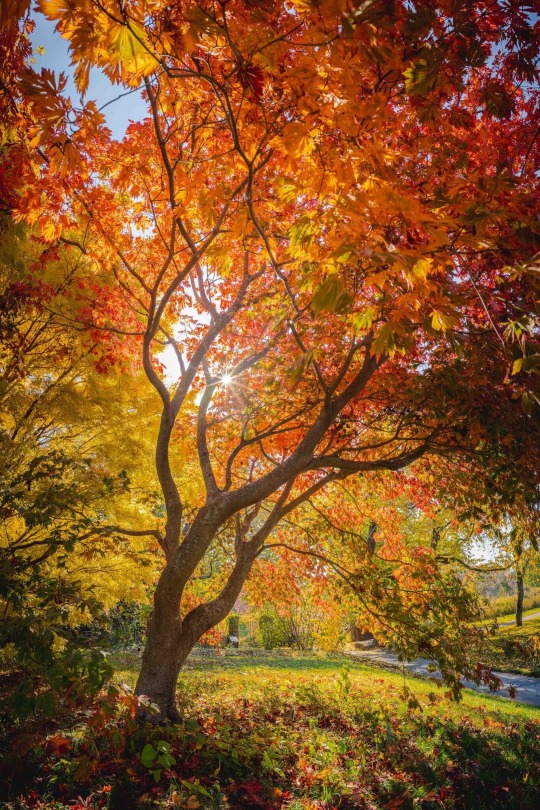
A Fern-Leaf Maple (Acer Japonicum Aconitifolium) in its fall glory at the New York Botanical Garden, with hot-colored foliar pigments taking center stage, after the chlorophyll that dominated the growing season recedes. Credit...New York Botanical Garden Photo
But woody plants can’t completely tuck in like that. Even those that drop their leaves as part of their overall defense have parts that remain exposed. Those include organs as small and seemingly vulnerable as the buds of next year’s leaves and flowers, or the growing tips of twigs and branches where elongation will resume again come spring.
In preparation, the undeveloped flowers, leaves or shoots may become encased in overlapping bud scales every autumn. Some species may also coat the covered buds in “a thick resin to protect them from the cold and wind,” said Leslie Day, the author of urban-focused natural history guides, including “Field Guide to the Street Trees of New York City,” and a plant-science instructor at the botanical garden.
It’s not just the buds that benefit from the waterproof sealant. Some insects do, too. Honey bees, for instance, mix the resin they scrape from bud scales and other plant parts with their saliva to produce propolis, which they use as a glue to seal cracks in their hives, Dr. Day said.
Another unexpected application for the antimicrobial sealant: “To embalm large intruders like mice and wasps that are too heavy to carry out after they sting them to death,” she said. Noted: Nature provides — and it wastes nothing.
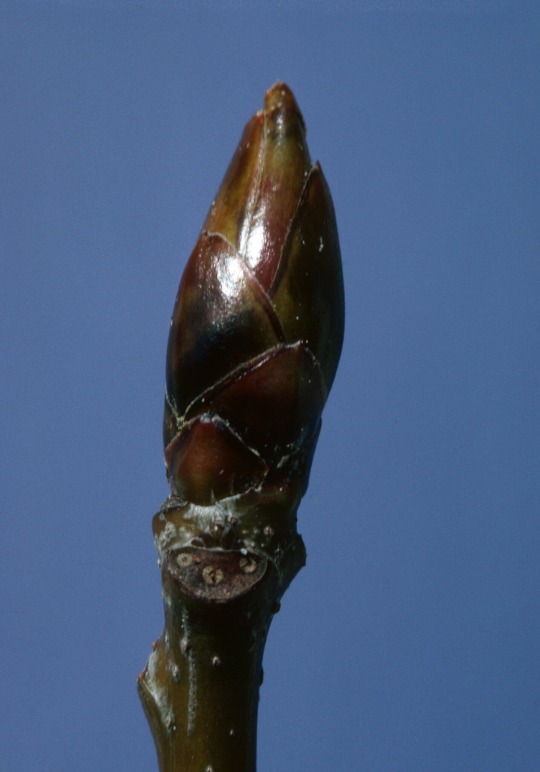
In preparation for winter, many woody plants encase their undeveloped flowers, leaves or shoots in overlapping bud scales. Some species may also coat the covered buds in a thick resin for extra protection. Credit...Brian Capon
The Coloring Up, and the Letting Go
We watched the recent show, as shorter days and cooler weather triggered the breakdown of chlorophyll, the predominant pigment in most leaves. What was unmasked are known as the accessory pigments, Dr. Alvarez said, including yellow and orange carotenoids that were there all along, in a supporting role. Although hidden during the growing season, they were helping with photosynthesis.
The anthocyanin pigments that we perceive as red and purple in dogwoods, sumacs or red oaks, however, weren’t hiding. They are produced in fall, products of a chemical change involving an increased concentration of sugars in the leaves.
Then — no matter the color, but all too soon for our liking — the foliage on most deciduous trees takes flight. The big event’s timing is determined by changing chemistry in the tiny abscission zone, a narrow band of cells at the base of each petiole, or leaf stalk, where it attaches to the stem or branch.
“None of this would happen without the plant hormones,” Dr. Day said.
Which hormone is at work in leaf drop? Not abscisic acid, the one that “abscission zone” would seem to imply. That hormone tells the plant to form the bud scales, to stop certain aspects of growth ahead of dormancy and even to keep the seed dormant until the time is right for germination, Dr. Day said.
It is now understood instead that ethylene — better known for its role in ripening fruits — is the catalyst. (Fruit and flowers, with their own specialized abscission zones and timing, are likewise influenced by ethylene on when to drop.)
“It starts to break down the cell membranes and form this zone where the leaf eventually can just fall,” Dr. Day said, “sealing itself off and leaving a scar on woody plants.” A thin cork layer forms to prevent water loss and fungal invasions.

A scar left behind after the dropping of a northern Catalpa leaf (Catalpa speciosa). The letting go is controlled by chemistry in the tiny abscission zone, a narrow band of cells at the base of each leaf stalk, where it attaches to the stem. The distinctive scars can aid in winter tree identification. Credit...Regina Alvarez
The outline of each scar forms a shape like an oval or a heart, Dr. Alvarez said. Dots inside that outline mark where the plant’s vascular tissues, the xylem and phloem, were connected, and conducted fluids between stem and leaf.
These scars can be very distinctive. How have I never looked at them?
Plenty of garden downtime lies ahead for such exploration. The scars are a useful tool for winter tree identification, said Dr. Alvarez, who admits that she and Dr. Day “get obsessive over leaf-scar photos.”
Dr. Day explained: “You learn to look at the scars and say, ‘Oh, that’s an Ailanthus’ or ‘That’s a horse chestnut.’”
The horse chestnut (Aesculus hippocastanum), for example, with its big compound foliage, “leaves behind what looks like a little horseshoe or smiley-face scar,” she said.

A portion of the New York Botanical Garden’s Benenson Ornamental Conifers collection in winter. The often narrow foliage of conifers is winter-adapted: It is less vulnerable to the effects of ice, snow and wind than broader leaves, and coated in a waxy substance. Credit...New York Botanical Garden Photo
When Leaves Don’t Fall (at Least Not Right Away)
How can so much be governed by such a microscopic piece of real estate?
“The restriction of ethylene’s destructive effects only to cells in the abscission zone illustrates the precise control plants exercise over their hormone systems,” Dr. Capon wrote.
Nowhere is this engineering prowess more astounding than in the deciduous trees and shrubs that hold onto their dead leaves all winter, only to release them in spring. To accomplish that, they must manage to keep just that attachment point up and running — the junction of a dead leaf and a dormant twig. Preposterous.

The inner Needles of a White Pine (Pinus Strobus) preparing to shed. Conifers don’t complete an annual shed like deciduous trees, but a portion of their oldest needles do drop each year. How long each needle holds on is particular to the species, ranging from two years to four or more. Credit...Margaret Roach
The trait, called Marcescence, is common to some Witch-Hazels (Hamamelis) and certain Hornbeams (Carpinus), Beech (Fagus) and Oaks (Quercus), especially in the lower branches and in younger trees.
Scientists hypothesize that the persistent leaves may have developed long ago, as an adaptation against browsing by large animals the plants evolved alongside. A mouthful of dead leaf is a less-tasty target than a bare twig and tender buds, something today’s deer also seem to understand.
A bonus design tip for gardeners: A row of marcescent trees, although not technically evergreen, makes for an effective, nearly year-round screen.
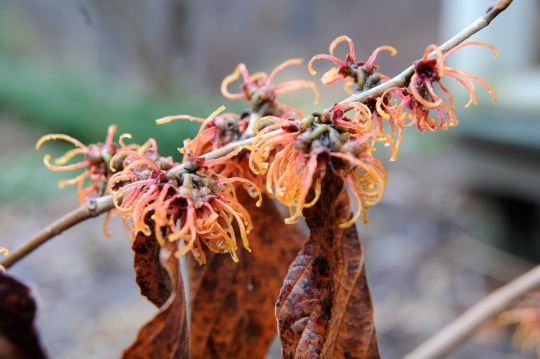
A hybrid witch-hazel (Hamamelis x intermedia Jelena) in February bloom, still holding last year’s faded leaves. Some deciduous woody plants hold their dead leaves until spring, a trait called marcescence, by keeping just the tiny attachment points up and running. Credit...Margaret Roach
Those Yellow and Brown Inner Conifer Needles
For something evergreen, we often turn to conifers — although they aren’t technically evergreen. Their often narrow foliage is winter-adapted: less vulnerable to the effects of ice, snow and wind than broader leaves, and coated in a waxy substance that guards against the elements.
“They’re always green,” Dr. Alvarez said, “but that doesn’t mean it’s always the same needles.”
When she worked for the Central Park Conservancy, Dr. Alvarez heard the question regularly starting in the early fall, when the inner foliage of many conifers turned yellow and brown. “What’s wrong with the trees?” visitors wanted to know.
As part of their life cycle, conifers undergo leaf drop, too. But it’s a sequential one — not an annual process like that of deciduous trees, and not to be confused with discolored foliage throughout the tree or at the branch tips at other times, which may indicate disease or injury.
Each year, the oldest foliage fades and prepares to fall. How long each needle holds on before that is particular to the species, ranging from two years to four or more.
Admittedly, the process can look alarming.
There’s no need to panic, though. Nothing’s wrong — provided you know a little about how to read the tree leaves.
#Botany#Trees#Tree 🌴 🌲 Leaves 🍁 🍂 🍃#Amateur Gardener#Margaret Roach#The New York Times#Fallen Foliage#New York Botanical Garden 🪴#Needles of a White Pine 🌲#Marcescence | Witch-Hazels
2 notes
·
View notes